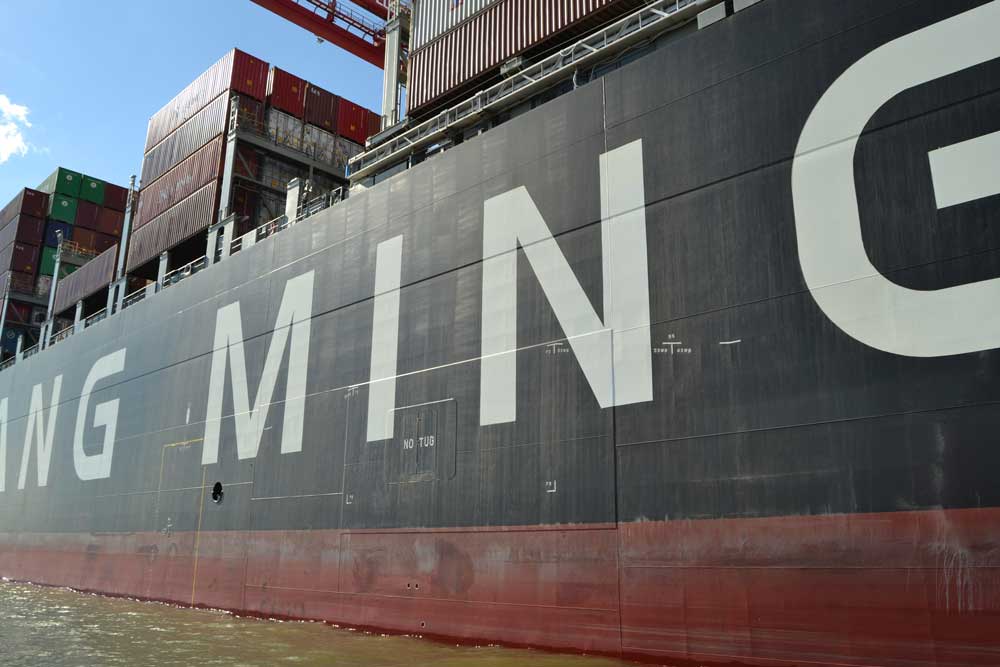Floating gas terminals are increasingly important in the LNG supply chain – making
a specific technical framework necessary. Bureau Veritas has published dedicated rules
and notations, recognizing the specific needs of these still relatively new ship types
Growing interest in the deployment of Floating Storage and Regasification Units (FSRUs) or Floating Storage Units (FSUs) is due to[ds_preview] the fact that they are a relatively fast, relatively low cost path in the development of LNG import capability.
The construction of onshore LNG reception terminal infrastructure including gas storage tanks and regasification capacity is a lengthier and more expensive solution with, possibly, more arduous regulatory and planning requirements taking into consideration land availability and societal impact.
However, floating gas terminal solutions enable demand for gas imports to be met relatively rapidly by seaborne LNG shipments. Furthermore, the potential mobility of a floating unit provides operators with the flexibility to seek and serve alternative markets on redeployment [more on flexibility]. As availability of gas expands, and demand rises for cleaner energy, interest has grown in the potential for FSRUs and FSUs as rapid and flexible options to provide solutions for LNG reception, storage and regasification requirements.
FSRUs and FSUs are a type of vessel, which may not even resemble a ship – they could be a barge; perhaps flagged, or maybe not; whose engine may be disabled – or never even existed; which could be permanently moored for a very long period of time without dry-docking, off port limits, in an exposed environment, but nevertheless possibly in the close vicinity of densely populated shores; processing large quantities of a hydrocarbon gas product from cargo tanks before being pushed outboard for export ashore; with a crew whose professional experience after several years may be closer to that of refinery employees than professional seafarers.
There are issues and questions that arise of relevance to the operators, bankers, regulators, the insurers and customers as well as local populations: What construction standards should be used? What operational conditions and associated risks should be considered? What conventions and regulations should be applied – for the vessel, for the crew, for the environment? Which authorities actually control the complete story – the flag state, or port state? What influence will local regulatory requirements and governance have for the operations?
All the above will be, or can be, addressed in different ways, dependent on the customer needs – the compromise or balance sought as a consequence of asking the following questions related to operational requirements
Marine or offshore approach to risk
A fundamental issue in floating terminal projects is whether to follow a »marine« approach to addressing risk, akin to the risks addressed through classification ship rules and SOLAS. Or to adopt a risk approach that is more similar to that of the offshore industry. So, at one extreme, an LNG carrier with some or little modification could be used as a floating reception and storage terminal. At the other end of the spectrum, an FSRU or FSU newbuilding may have no propulsion capability, a non-hydrodynamic hull form: effectively a floating barge envisioned, and intended, to be moved only very seldom and designed to be moored in very sheltered waters.
Intended location is important for the design and regulatory as well as operational requirements. Trading LNG carriers sail either in a fully laden condition – from the export to the import gas terminal – or almost empty with a slight »heel« of LNG to keep tanks cool, when they return to load. LNG carriers do not generally sail with cargo tanks partially filled. Loading and discharging are performed in sheltered gas terminals where the ship stands stationary – and so does the liquefied gas in the tanks throughout the cargo operation – without disturbing the free surface during partial filling phases is straightforward.
The FSRU regasification LNG carrier will normally be expected to operate with tanks at all ranges of fill level. Ship motions cause »sloshing« of the cargo inside the tanks which may be only rarely full and often partly filled at all levels from almost empty to almost full. The sloshing of the cargo may generate huge impact loads on tank bulkheads, containment system boundaries, and pump towers – which all must be designed and reinforced accordingly.
And the further away the mooring is from the shore, the more exposed the ship is to significant sea states and wave conditions. In the calm, protected, environment of a port, transferring liquefied gas by flexible hoses from one ship to another is certainly not a picnic party. But it is no more complicated than discharging to an onshore LNG terminal. The crew of an LNG carrier is well trained for the operation and fully aware of the potential dangers, not only for the people on deck, but also the risks of leaking liquefied gas which, at -160 °C, which may cause severe damage to the steel deck structure. It is understood, however, that FSRUs crew members are larger in number than a standard LNG carrier.
Conversions – quicker to market?
A key decision to be made when developing an FSRU/FSU project is a newbuilding or conversion of an existing LNG Carrier (LNGC). Conversion projects are likely to be quicker to enter operation than newbuilds. To date five of the 27 FSRUs in service are conversions. With recent increases in efficiency of LNGCs (lower fuel consumption/lower boil off), and a growing fleet of gas carriers in a developing spot market, opportunities to convert previous generation gas carriers into use as FSRUs or FSUs have been identified. Fuel consumption and boil off rates will be less of an issue if the FSRU is not trading as a ship and regasification operations are prompt. Conversion to FSU is a simpler than to FSRU. Taking an FSU, with regasification on a separate barge or terminal, may be the fastest and most cost-effective route.
With one leg in Marine and one leg in Offshore, most FSRU/FSU projects raise technical, regulatory, operational and environmental issues and questions – from all stakeholders. These may now be addressed through Bureau Veritas Rules, Notations, Guidelines and Services.
Rules and notations from BV
In November 2017 Bureau Veritas published NR645, the first rules document fully dedicated to Floating Storage and Regasification Units (FSRUs) and now new notations under Bureau Veritas Rules for the Classification of Floating Storage Regasification Units and Floating Storage Units (NR 645 – July 2018) address the specific requirements of Floating storage units (FSUs) have been issued. The notation »FSU-LNG« provides the specific classification requirements including structure and safety aspects for floating units dedicated to store LNG that are neither designed nor built to transport LNG. The notation »Liquefied Gas Carrier – FSU« provides specific classification requirements including structure and safety aspects for floating units dedicated to store LNG that are also designed and built to transport LNG. While new Guidelines, (NI655 – July 2018) »LNG Carrier Conversion to FSRU or FSU« address the requirements for conversion of existing LNG carriers to either floating LNG gas storage units fitted with a regasification plant (FSRUs) or floating LNG gas storage units (FSUs).
Carlos Guerrero

















